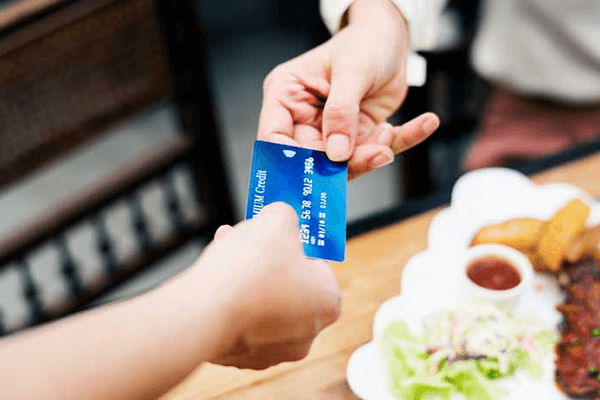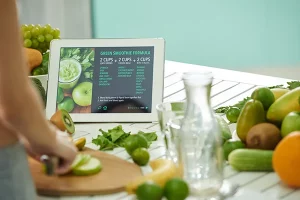Author: Olivia Pennington Wright, Restaurant Consultant
As a restaurant consultant, the key areas my clients want help with is reducing costs and boosting their sales. Boosting sales can be achieved in several ways but one of the easiest and cheapest to implement is to display nutrition facts information clearly on the packaging or on menus. Introducing nutrition information from MenuSano costs from as little as $25 per month and is super easy. You don’t need to know anything about marketing and advertising strategies and with it being so affordable merely one extra table per month will pay for the cost. In fact, you can start with a free trial to see just how easy it is.
However, when I suggest nutrition facts information, I am often met with the same objection. “Won’t it turn customers away? We’re trying to boost sales and not all our food is low calorie and low fat, surely telling our customers is not going to help us increase sales?”
Well, the answer is displaying nutrition facts information will always help foodservice producers boost sales – regardless of the type of food you produce.
In order to prove my point, I often take my clients on a quick trip back to marketing class…
In the world of marketing (as you may be aware) buyer personas are semi-fictional characters invented by businesses in order to better understand and target consumers.
Most businesses will have just one or two buyer personas but as food service providers, you’ll have many types of customers and, therefore, buyer personas.
In order to explain how your SALES WILL BE BOOSTED by introducing nutrition facts information let’s meet some buyer personas who are currently avoiding your restaurant if you don’t display nutrition facts data.
Read more: Nutrition Analysis for Cannabis Edibles
Meet Retiree Rita & Ron

Rita is 70 years young and retired. She does the food shopping and makes the food choices for both herself and her husband Ron. She has plenty to spend on food and eating out and is focused on healthy food.
“I have always done the food shopping,” she says. “I like fresh ingredients, classic dishes and we like to eat out. My husband loves blue cheese and red meat but he had a health scare last year. I now check the food labels religiously as Ron has to follow a low cholesterol and low-sodium diet. It’s not like he can’t have a treat and eat out but it’s important I have information. Ron’s health is paramount to me,” she explains.
Rita makes up a huge segment of the population. With an ever aging population, it makes sense to include nutritional facts information and choices for baby boomers that need to follow heart-friendly diets and diabetic options. Rita is not going to risk Ron’s health because you haven’t invested in nutrition facts calculator. But she’d love to give you her business if you can help her out by pointing her to your healthy options.
Read more: Labeling Rules & Ingredient Supply Chain Issues
Meet Calorie Conscious Clara

As an accountant, forty-something Clara loves all things numbers. She’s been keeping trim for years now and that’s not easy crunching numbers in the office all day.
“Time is tight for me,” Clara explains. “I grab lunch at the office usually at my desk and make sure it’s healthy and less than 500 calories. I work out three times a week and stay in control of what I eat,” she adds. “I’ll splurge on some of my favorite food occasionally after all I deserve it. I love deep fried Thai food, Potato Dauphinoise, and Chocolate Souffles. But if I don’t know how many calories are in the product, either on a menu or in the store, I tend to avoid it as a rule”.
You may consider Calorie Clara to be extra conscious – however, billions of dollars have been spent by Health Canada and the FDA to get home their message, and few women have not been mildly affected by their pervasive message. If your food or menu doesn’t include information on nutrition facts, you’re unlikely to win Clara’s business.
Read more: Meal Kit Delivery Services on the Rise
Meet Gourmet Gina
Gina is semi-retired and likes healthy and gourmet food. She has plenty to spend on her food budget and is still adventurous with her food choices.
“I spend as much as I like on the food I eat,” says Gina. “I would rather spend money on delicious healthy lobster, salmon, and beef than unhealthy cheaper food,” says Gina. “I like to know how much fat and calories are in food, too. I tend to dismiss retailers and restaurateurs that don’t display nutritional information,” she says. “I want to know what’s in my food and I want to buy it from a professional company I can trust. If they are not prepared to tell me what’s in their food, then they’re only giving me half the story.”
So Gina won’t be choosing your store. And she has a reasonable point. Gina wants to trust the company that she is buying food from; after all, she is putting it in her body and spending a great deal of money. Providing nutritional facts will allow Gina to trust you.
Read more: What is a Ketogenic Diet and What does it mean for the Foodservice Industry?
Meet Mum Maria

Full-time mum Maria has three kids and sees it as her duty to feed her children healthy food and instill healthy eating habits for life.
“I read labels whether I am shopping or eating out. It’s important for my kids to eat healthy food and I want to know what’s in the food we eat. It doesn’t mean I don’t buy food without nutrition labels but I tend not to. And after having three kids it’s tough to keep your figure,” she explains. “When we eat out, I prefer to choose places that I know to have healthy items on the menu for the kids including fresh fruit and vegetables and lighter options for me,” she says.
Mum Maria is busy with three kids, and she relies on information to make sensible decisions for her family. She prefers food service providers she can trust who display nutritional facts and provide consistent food. With plenty of food service providers, such as chain restaurants, providing nutritional information, she will likely choose them over a restaurant without nutritional information.
Read more: FDA Nutrition Label Rounding Rules
Meet Dieting Dave & Debbie

Dave and Debbie both work full time, they are middle-aged and they are both on a diet. Around one-quarter of Canadians are obese (a BMI over 30) and many like Dave and Debbie are doing something about it. They contribute to the 7 billion dollars spent on the diet industry annually.
“I can only eat 400 calories for lunch and then 600 for dinner,” says Dave. “I still like to eat out and get great meals but if the food isn’t labeled – I don’t know how to guess the calories so we don’t go to those places.”
“For sure,” agrees Debbie. “If we don’t know how many calories there are in the meal, we don’t dare cheat. But we can include treats in our diet as long as we have the nutritional information, and we are always looking for restaurants that serve tasty, healthy, low-calorie options.”
“We like the Shawarma sandwiches from Kabab Grill, which have only 356 calories and three grams of fat,” says Dave.
“I won’t be quite so careful after we are finished dieting but I don’t trust the food that isn’t labeled anymore. I make the assumption it’s really bad for you and loaded with calories that they don’t want to tell you about – like that’s why the Caesar dressing tastes so great!”
Dave and Debbie make up a significant portion of the Canadian population that is currently dieting. If your food isn’t labelled, forget it; they won’t be eating out at your restaurant. Dieters tend to continue their nutrition facts label-watching mentality either as successful dieters or as yo-yo dieters, so lose a significant portion of your customer base – right here by not displaying any nutritional information.
Dave also makes an interesting point. He makes the assumption that your food is outrageously calorific which may be the case but it might not be. MenuSano nutritional facts calculator software gives you the opportunity to experiment with recipes to create some surprisingly healthy and tasty options.
Research shows that even food that has a high-calorie count is still sold. Obviously not to people on a strict diet but when you display your calorie account you are being accountable to your customers. You are giving them the nutritional information they want in order to make decisions for themselves.
Read more: The Perfect Recipe for Preparing a Great Strategy
Meet Millennial Mia & Matt

Mia and Matt are both 17 and are students. Mia is vegetarian and is considering becoming vegan. They have been bombarded with a healthy food message in an information age since they were children. With today’s pressures, they are super careful about what they eat.
“I am super focused on what’s in my food. I want to stay slim. I’ve also decided that eating meat is not for me. I’m also looking at removing dairy entirely from my diet,” explains Mia.
“I work out when I can so I’m looking for something lean and healthy, packed with protein at a good price,” says Matt.
“We choose food that has information as it’s super important to us what we put in our bodies.” they agree.
Like it or not, Mia and Matt are the future, so don’t ignore them. Once again, they make up a large part of your consumer base, and they are not eating with you currently if you’re not displaying nutritional facts information.
Read more: Serving and Selling Cannabis in your Restaurant, Bakery, or Pizzeria
Conclusion
So that’s a pretty big spectrum of folks; I think you’ll agree.
How much more business could you be doing if suddenly all these people began to frequent your establishment or bought your packaged food?
It seems crazy to me to spend money on so many other things from talented chefs to quality sustainable ingredients, improved restaurant technologies, and marketing campaigns – and not display your nutritional facts information.
Displaying information on your nutritional facts is huge as far as I’m concerned.
As far as boosting sales is concerned, this is the quickest, easiest, and most affordable method. In terms of return on investment, if you haven’t yet implemented nutrition fact information, then do it. It costs as little as $29 per month and has to be the most cost-effective sales-boosting tactic before concentrating on more expensive and complex strategies.
Also, spending a little time with your chefs and the MenuSano software highlighting healthy items and experimenting with recipes will further boost your sales. So check out MenuSano pricing and register for a free trial today!



















